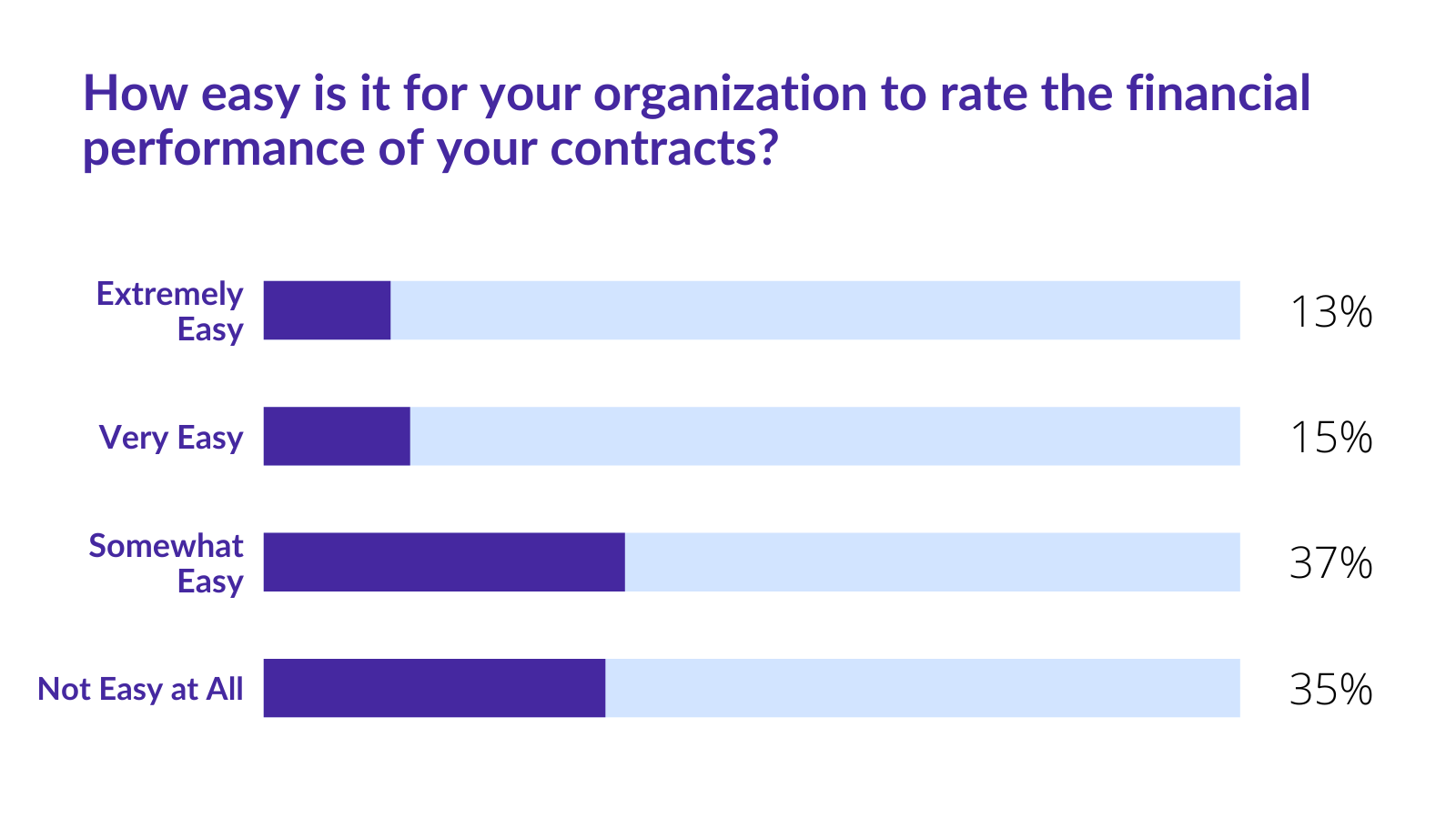Crossing the AI Chasm: Post-signature Management Poses a Challenge, But Tech Can Help
To get some clarity and cross the contract AI chasm, we have partnered with World Commerce & Contracting to conduct the first-ever, comprehensive benchmark study on the benefits, barriers, and usage of AI within contract management. In this part of our series “Crossing the Contract AI Chasm”, we dive deep into our third trend: Post-signature contract management presents the most challenges for organizations. Many believe that well-integrated technology is the solution.
Our findings
Our respondents said obligation tracking is the primary point of friction for their organization. Additionally, many said it’s challenging to rate the financial performance of their contracts, 35% said “not at all easy”, 37% said it’s “somewhat easy”, but very few find it “very easy”.

When respondents were asked what they would do to improve obligation tracking at their organization, almost everyone pointed to an integrated CLM solution. Common responses were:
“Implement a CLM tool to support the evaluation and process.”
“Integrate existing tool with ERP and operational management tools.”
“Implement a better CLM tool” that has “More transparency”,
“Clear dashboards and automatic reminders” and a “more user-friendly process.”
“Implement a better CLM tool” that has “More transparency”,
In alignment with the need for better CLM technology, roughly 45% of respondents said that AI-based obligation management is a top priority for their organization in the next 1-2 years. Additionally, the need for an end-to-end contract lifecycle management solution seems to be stronger than ever, with 73% of respondents indicating that they are responsible for both pre-and post-award phases of contract management.
Even so, 56% point to post-award contract management as their primary area of focus. One possible explanation for this
is that the processes for the post-signature phase are still far too manual.
Key considerations
Contract value is measured during the post-signature phase.
Contract value can be measured in many ways, but generally, negotiated benefits, revenue improvements, dispute management, and cost reductions achieved are the primary ways organizations track value, all of which occur
post-signature.
Technology can be used to reduce friction throughout the contract lifecycle
In previous research, WorldCC found that there are over 40 friction points in the contract lifecycle which contribute to value erosion. One way to address this is through the automation that technology can provide.
To read the full benchmark report, click here.
To see what an AI-charged solution can do for you, check out our Lifecycle AI page! If one of your top priorities for the next few months is to implement a CLM solution, request a demo!






